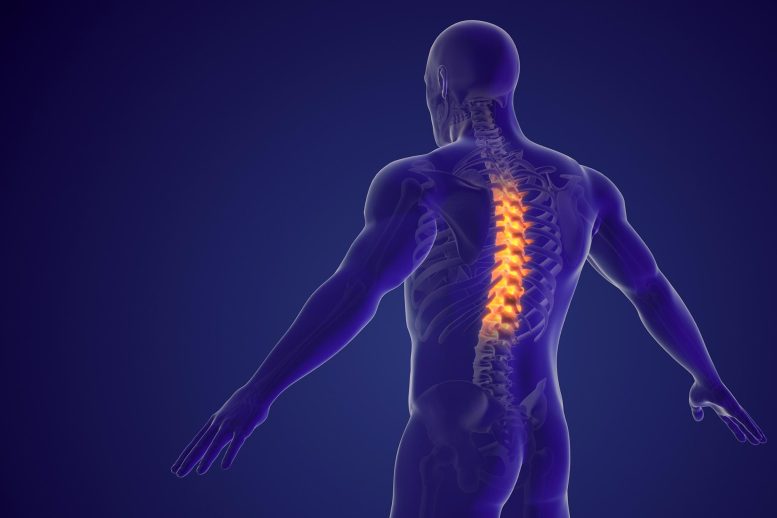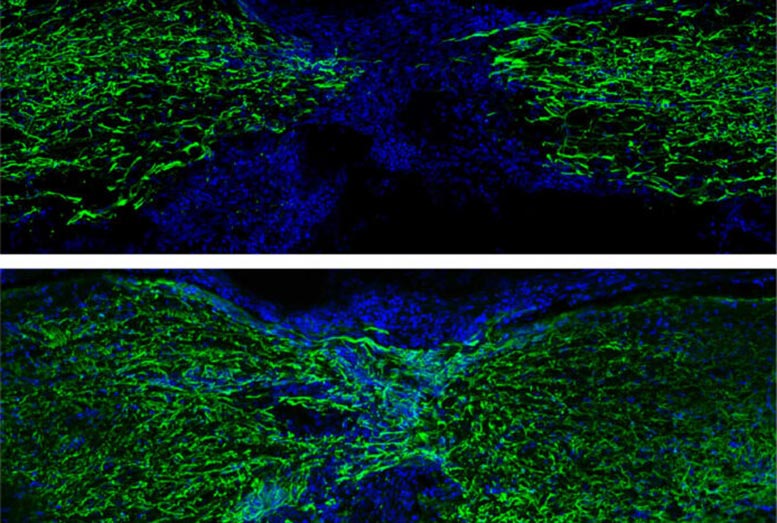
A detailed blueprint of nerve cells’ dramatic changes could help identify ways to heal spinal cord damage.
Zebrafish possess a unique ability to regenerate a severed spinal cord, a capability that could hold the key to healing similar injuries in humans. Research reveals that the survival and adaptability of injured neurons are crucial for this regeneration. Unlike humans, zebrafish neurons do not die after injury but instead undergo a transformation, becoming central to the healing process. The study suggests that saving these neurons from death, rather than focusing solely on stem cells, may be vital for developing effective spinal cord injury treatments.
Zebrafish and Spinal Cord Regeneration
Zebrafish are members of a rarefied group of vertebrates capable of fully healing a severed spinal cord. A clear understanding of how this regeneration takes place could provide clues toward strategies for healing spinal cord injuries in people. Such injuries can be devastating, causing permanent loss of sensation and movement.
A new study from Washington University School of Medicine in St. Louis maps out a detailed atlas of all the cells involved — and how they work together — in regenerating the zebrafish spinal cord. In an unexpected finding, the researchers showed that survival and adaptability of the severed neurons themselves are required for full spinal cord regeneration. Surprisingly, the study showed that stem cells capable of forming new neurons — and typically thought of as central to regeneration — play a complementary role but don’t lead the process.
The study will be published today (August 15) in the journal Nature Communications.
The Role of Neurons in Zebrafish Regeneration
Unlike humans’ and other mammals’ spinal cord injuries, in which damaged neurons always die, the damaged neurons of zebrafish dramatically alter their cellular functions in response to injury, first to survive and then to take on new and central roles in orchestrating the precise events that govern healing, the researchers found. Scientists knew that zebrafish neurons survive spinal cord injury, and this new study reveals how they do it.

“We found that most, if not all, aspects of neural repair that we’re trying to achieve in people occur naturally in zebrafish,” said senior author Mayssa Mokalled, PhD, an associate professor of developmental biology. “The surprising observation we made is that there are strong neuronal protection and repair mechanisms happening right after injury. We think these protective mechanisms allow neurons to survive the injury and then adopt a kind of spontaneous plasticity — or flexibility in their functions — that gives the fish time to regenerate new neurons to achieve full recovery. Our study has identified genetic targets that will help us promote this type of plasticity in the cells of people and other mammals.”
Mapping Cell Functions in Spinal Cord Regeneration
By mapping out the evolving roles of various cell types involved in regeneration, Mokalled and her colleagues found that the flexibility of the surviving injured neurons and their capacity to immediately reprogram after injury lead the chain of events that are required for spinal cord regeneration. If these injury-surviving neurons are disabled, zebrafish do not regain their normal swim capacity, even though regenerative stem cells remain present.
When the long wiring of the spinal cord is crushed or severed in people and other mammals, it sets off a chain of toxicity events that kills the neurons and makes the spinal cord environment hostile against repair mechanisms. This neuronal toxicity could provide some explanation for the failure of attempts to harness stem cells to treat spinal cord injuries in people. Rather than focus on regeneration with stem cells, the new study suggests that any successful method to heal spinal cord injuries in people must start with saving the injured neurons from death.
“Neurons by themselves, without connections to other cells, do not survive,” Mokalled said. “In zebrafish, we think severed neurons can overcome the stress of injury because their flexibility helps them establish new local connections immediately after injury. Our research suggests this is a temporary mechanism that buys time, protecting neurons from death and allowing the system to preserve neuronal circuitry while building and regenerating the main spinal cord.”
Potential for New Therapies in Mammals
There is some evidence that this capacity is present but dormant in mammalian neurons, so this may be a route to new therapies, according to the researchers.
“We are hopeful that identifying the genes that orchestrate this protective process in zebrafish — versions of which also are present in the human genome — will help us find ways to protect neurons in people from the waves of cell death that we see following spinal cord injuries,” she said.
Future Research Directions
While this study is focused on neurons, Mokalled said spinal cord regeneration is extremely complex, and future work for her team will delve into a new cell atlas to understand the contributions of other cell types to spinal cord regeneration, including non-neuronal cells, called glia, in the central nervous system as well as cells of the immune system and vasculature. They also have ongoing studies comparing the findings in zebrafish to what is happening in mammalian cells, including mouse and human nerve tissue.
Reference: “Single-cell analysis of innate spinal cord regeneration identifies intersecting modes of neuronal repair” by Vishnu Muraleedharan Saraswathy, Lili Zhou and Mayssa H. Mokalled, 15 August 2024, Nature Communications.
DOI: 10.1038/s41467-024-50628-y
This work was supported by the National Institutes of Health (NIH), grant number R01NS113915; and a Postdoctoral Fellow Seed of Independence Grant from the Department of Developmental Biology at Washington University School of Medicine.
1 Comment
Another way to help heal nerves is to take the pressure off them. Often nerve pressure occurs as the discs that separate the spinal vertebrate age and dry out, changing the geometry of the spine and putting pressure on nerves.
The standard approach to fixing this is to do laminectomies to provide more clearance for the nerves or worse, do fusions on the spine area.
However, there is a much simpler and cheaper way to help and that is to restore the height of the spinal disc by shooting some type of fluid into it. Researchers have been working on various formulations for years and years but as with all things medical, it takes decades to get new technologies out of the lab.
As a person with long term spine problems (4 surgeries over the past 35 years!), I have a lot of experience in this area.
Over the last six years or so, I was suffering increasing sciatica pains in my left buttocks and down my left leg. A couple of epidural shots yearly would help, sometimes more, sometimes less. A number of spine surgeons tried to push me into getting a fusion, which I refused over and over again.
Last September, I was able to get a newly available allograft shot in the L5 disc from a company called Vivex. It took about 6 months but since the spring, the constant left side sciatica pain I have lived with for years has almost completely resolved! Also my foot numbness has improved.
We had L4 scheduled for a similar shot a couple of months after the L5 shot in the hopes it would help resolve other problems.
But unfortunately, Medicare took issue with the shot and even though it has been FDA approved, apparently is calling it still “experimental” and has refused to pay for the shot or any future ones. This is currently under appeal but that can take years with CMS/Medicare.
If people have spinal disc compression or desiccation problems, they should investigate the availability from their insurance company of this technology for nerve improvement.